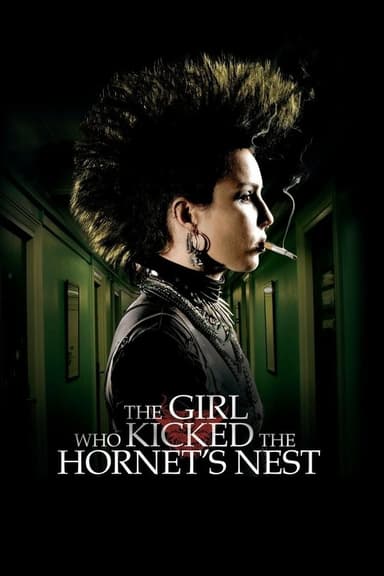
The Girl Who Played with Fire
2009 • Action, Crime, Drama, Mystery, Thriller • R
Mikael Blomkvist, publisher of Millennium magazine, has made his living exposing the crooked and corrupt practices of establishment Swedish figures. So when a young journalist approaches him with a meticulously researched thesis about sex trafficking in Sweden and those in high office who abuse underage girls, Blomkvist immediately throws himself into the investigation.
Runtime: 2h 9m
Why you should read the novel
If you’re captivated by the suspense and intrigue of The Girl Who Played with Fire movie, you owe it to yourself to read Stieg Larsson’s novel. The original book delves far deeper into the psychology of Lisbeth Salander and Mikael Blomkvist, offering intimate access to their motivations, fears, and complex backgrounds in a way that no film adaptation can fully capture.
Reading the novel reveals the intricate webs of mystery and personal struggle that shape Salander’s journey. Plot elements that may feel rushed or condensed on screen unfurl organically, providing richer subplots and detailed explorations of supporting characters. Larsson’s storytelling immerses you in the icy Swedish landscape, drawing you into the tension and danger at every turn.
By experiencing the source material, you’ll encounter the series’ signature investigative depth, stunning twists, and sharp commentary on social injustice. The book’s immersive world-building and narrative detail create a more intense and rewarding experience—one that will stay with you long after the story ends.
Adaptation differences
The film adaptation of The Girl Who Played with Fire significantly condenses the sprawling plot of the novel. Many of the investigative details, secondary storylines, and character backstories are simplified or omitted entirely. For example, the book spends considerable time on the journalists’ work at Millennium magazine and their methods in uncovering the sex trafficking ring, while the movie streamlines these investigative threads, focusing primarily on the central mystery.
One of the most notable differences is the development of Lisbeth Salander’s character. In the novel, readers gain deep insight into her psychological state and her history, including pivotal reasons behind her actions and the trauma she’s endured. The movie, bound by its shorter runtime, can only suggest these layers, relying on visual cues and brief dialogue, which can lead to a less nuanced portrayal of her struggles and motivation.
Several supporting characters, such as Paolo Roberto and Dr. Teleborian, receive greater attention and development in the novel. The complex web of interactions among journalists, police, and criminals creates a sense of realism in Larsson’s book. However, the movie trims or entirely omits some subplots, reducing the richness of the world and the interplay between characters.
The novel also delves much further into the investigation’s outcome and consequences, spending time on legal maneuverings, exposés, and emotional fallout after the main action concludes. The film, on the other hand, moves more rapidly toward resolution, leaving fewer loose ends addressed in detail. This difference means the book offers greater closure and a more fully realized depiction of justice and its personal costs.
The Girl Who Played with Fire inspired from
The Girl Who Played with Fire
by Stieg Larsson












